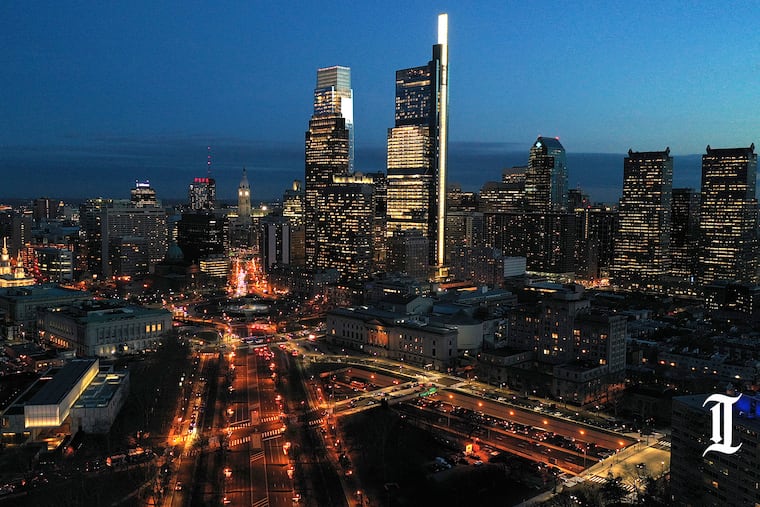Benjamin Franklin Parkway is getting a redesign. You can weigh in on the changes.
Hate parkway traffic? Want more connected green spaces? Let your voice be heard with a new survey.

Initially designed a century ago as a gateway to thousands of acres of green space in Fairmount Park, the Benjamin Franklin Parkway is getting a redesign that takes it back to its roots.
According to the city’s Office of Transportation, Infrastructure and Sustainability (OTIS), the parkway has increasingly been modified to accommodate vehicular traffic, seeing upwards of 25,000 vehicles per day. But the parkway remains one of the city’s crowning achievements in civic pride and design as a corridor to some of the best museums in the world, including the Philadelphia Museum of Art, The Rodin, The Barnes, The Franklin Institute and Academy of Natural Sciences — not to mention the forthcoming expansion of the African American Museum in Philadelphia.
It’s also where cultural events like the Made in America music festival has welcomed tens of thousands of attendees each year for the past decade (until it was canceled this year) and where the city’s Parks and Recreation unveiled its pop-up summer urban oasis and beer garden, The Oval, to great success.
Finding the right design to make the Parkway “more park, less way” is nothing new, said Mike Carroll, the deputy managing director for OTIS. Parks and Recreation started getting serious about this idea in 2013 when they partnered with the University of Pennsylvania to figure out ways to make the parkway more vibrant, accessible and welcoming to pedestrians and tourists. This approach is meant to prioritize walking and recreation while vehicular traffic gets a road diet without turning traffic into a nightmare.
Since 2013, the city has added dozens of new fixtures to test the waters of a total redesign, like pedestrian crossings, the addition of bike lanes, and planting new street trees to the creation of The Oval pop-up garden in Eakins Oval, including occasionally closing down outer vehicle lanes on the parkway (to which OTIS said has not led to major traffic issues).
“There’s a major traffic highway running through the city, and it’s also our ceremonial mile and our place of civic pride, but because it’s a super big main artery for cars — how can we reconcile that?” said Emily McCoy, associate professor of landscape architecture at the University of North Carolina and a chief designer at Design Workshops, the design firm tapped to redesign the parkway.
With the ball rolling on new plans for the parkway, the designers are looking to Philadelphians for help.
Take a survey to help redesign Benjamin Franklin Parkway
Design Workshop, the design firm behind park reimagining projects like Paris’ Champs d’Elysses, is in the pre-planning stages. This means there is no final design yet, let alone a rough draft, but input from Philadelphians with fresh ideas and perspectives will get them closer to an official redesign.
Out of the strategies already being considered, there are shorter-term (five to 15 years) and longer-term (15 years and beyond) goals that will be met. None of these are set in stone, but they give an idea of what could become the reimagined Benjamin Franklin Parkway. These are the strategies that Design Workshop is asking for feedback on.
Short-term strategies include “Connect The Oval,” a transition of the roundabout roadway in front of the art museum into an expanded green space for recreation, instead of a roadway for driving, seamlessly connecting the museum steps to the grass where the Washington Monument fountain sits. Another plan is to “Green The Spine,” taking the outer vehicular lanes on the parkway and turning them into green park space.
Long-term strategies include “Circle to Square,” taking the roundabout Logan’s Circle and pushing and limiting the vehicular lanes to the far outer edges of the area to turn the circle into a large square green space. Additionally, there are plans to “Take Me To The River,” a green space redesign connecting the Schuylkill River and the parkway with improved bike and pedestrian connections and parking areas.
You can find an entire walkthrough of the engagement process, the pre-plan strategies — and most importantly, take the survey at phlparkway.com. The survey will be available until Sept. 18.